Summary of climate disasters on the planet: April 2–8, 2025
An icy blow from the Arctic paralyzed Europe. Tornadoes and floods turned vast regions of the United States into disaster zones. Siberia was overwhelmed by a wave of hurricane winds and wildfires. Many believe—this is no coincidence...
Read this summary of climate disasters to learn about these and other natural disasters that struck people across the planet during the week of April 2 to April 8.
Arctic Cold Blast in Europe
Starting April 5, Arctic cold began sweeping into Central and Eastern Europe, the Balkans, parts of the Mediterranean, and Turkey. After an unusually warm March, which triggered rapid plant growth and early tree blooming, the region was hit by anomalously low temperatures and heavy snowfalls.
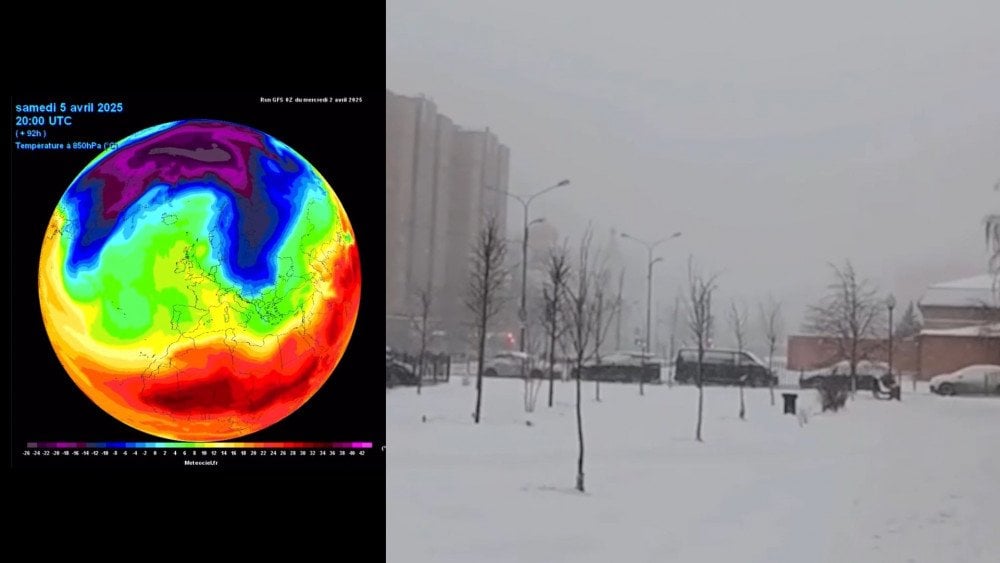
Anomalous cold snap and heavy snowfalls struck Europe in April
Agriculture came under serious threat, especially blooming fruit trees, which are highly sensitive to sudden temperature drops and frost.
In Belarus, powerful snowfalls accompanied by blizzards and squally winds left 272 settlements without electricity. The most severe aftermath was seen in the Minsk and Mogilev regions.
In Poland, after daytime temperatures of around +20°C (+68°F), a sharp cold outbreak brought frost, strong winds, snow, and freezing rain. In Olsztyn, snowfall was accompanied by a thunderstorm, while in Warsaw, winds up to 80 km/h (50 mph) damaged power lines and tore roofs off houses.
In Bulgaria, snow depths reached up to 40 cm (16 in) in some areas, causing traffic restrictions and power outages. In the city of Plovdiv, fallen trees damaged vehicles. The April cold blast destroyed nearly 100% of the country’s crop of apricots, peaches, plums, apples, pears, and cherries.
In Ukraine, heavy snowfalls occurred in the western regions and even in the south, in Odessa Oblast. Temperatures dropped 6–12 degrees below the climatic norm. In the Carpathians, the temperature dropped to −18°C (−0.4°F). According to meteorologists, a frost wave lasting almost a week during fruit tree blossoming is an unprecedented event.
On April 6, Greece, where temperatures this time of year usually hover around +20°C (+68°F), saw snowfalls in the northern and central parts of the country.
In some areas, including Thessaloniki, snowdrifts reached 30 cm (12 in), and in some areas, temperatures dropped to −7°C (19.4°F). Frozen cherries, apricots, and peaches caused serious losses for farming households.
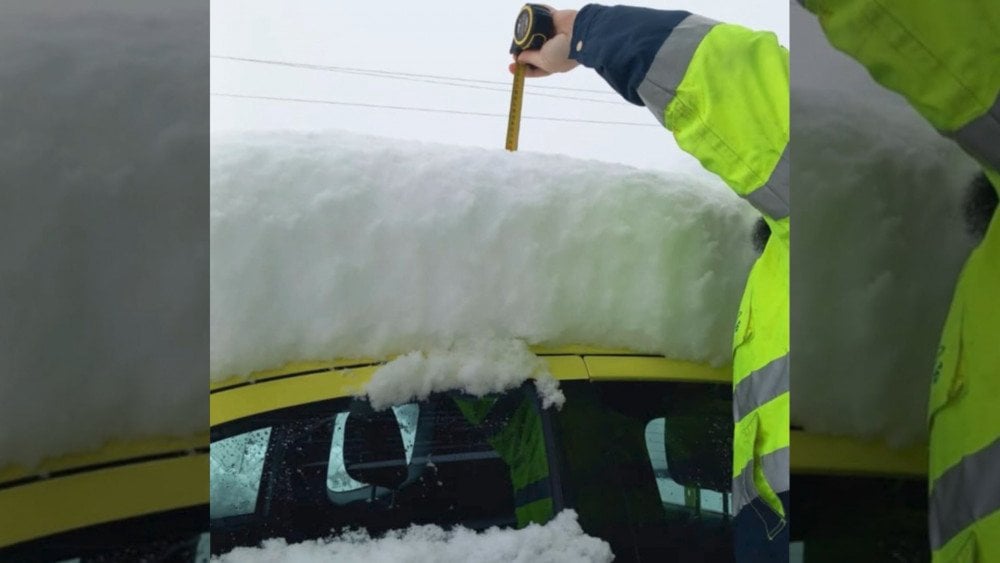
A thick layer of snow on a car after the April snowfall in Halkidiki, Greece
On April 7, Turkey was hit by heavy rains, and some regions were blanketed by unexpected snow. Temperatures across the country dropped 4–10 degrees below average.
Spain
On April 3, Storm Nuria struck the Canary Islands with devastating wind gusts. In Teide National Park on the island of Tenerife, gusts reached 124 km/h (77 mph); and in the town of Vallehermoso on the island of La Gomera—119 km/h (74 mph).
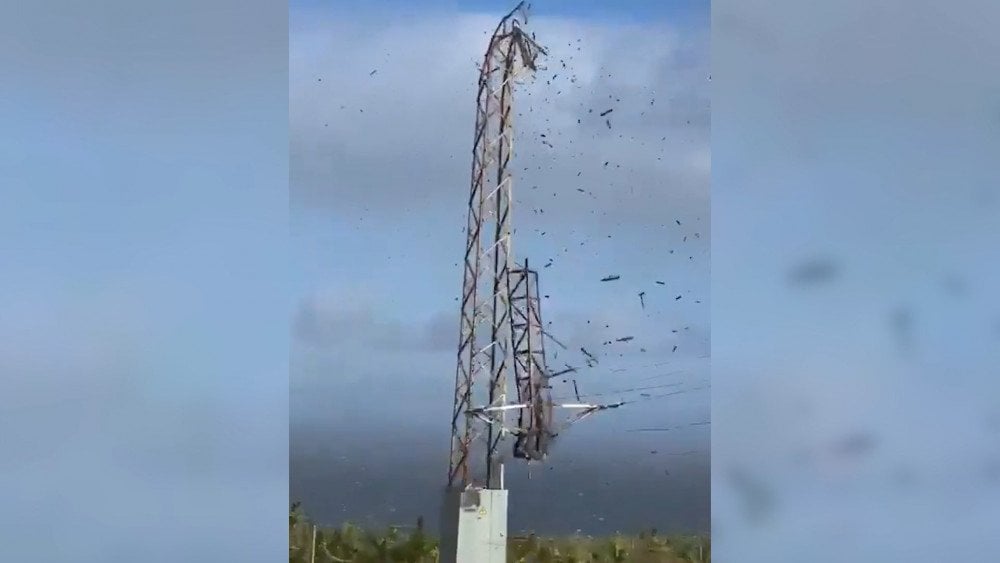
In Spain, a power line support collapsed due to strong winds
The highest-level weather alert was issued for the island of Palma, prompting concern even among longtime residents, as such extreme conditions are rarely seen in the area.
Strong winds destroyed metal structures, fallen trees blocked roads, and widespread power outages were reported.
The storm forced airport operations to halt, and five-meter (16-feet) waves disrupted maritime transportation. Heavy rainfall was recorded in several parts of Tenerife: Cruz de Tea saw 88 mm, while Vilaflor registered 60 mm.
On April 4, the storm reached mainland Spain. In the region of Castilla-La Mancha, it brought torrential rain, strong winds, and hail. Albacete province was hit especially hard. In the city of Albacete, streets and rooftops were blanketed in hail within minutes.
The intense rainfall caused damage to farmland, particularly to blossoming almond trees in the municipalities of Tobarra, Ontur, and Balsa de Ves.
In Cuenca province, a tornado swept through the municipality of Belmonte, damaging buildings, trees, and solar panels. Fortunately, no injuries were reported.
In the Andalusia region, a tornado near the city of Seville claimed three lives. The storm destroyed a warehouse, reducing it to a pile of debris.
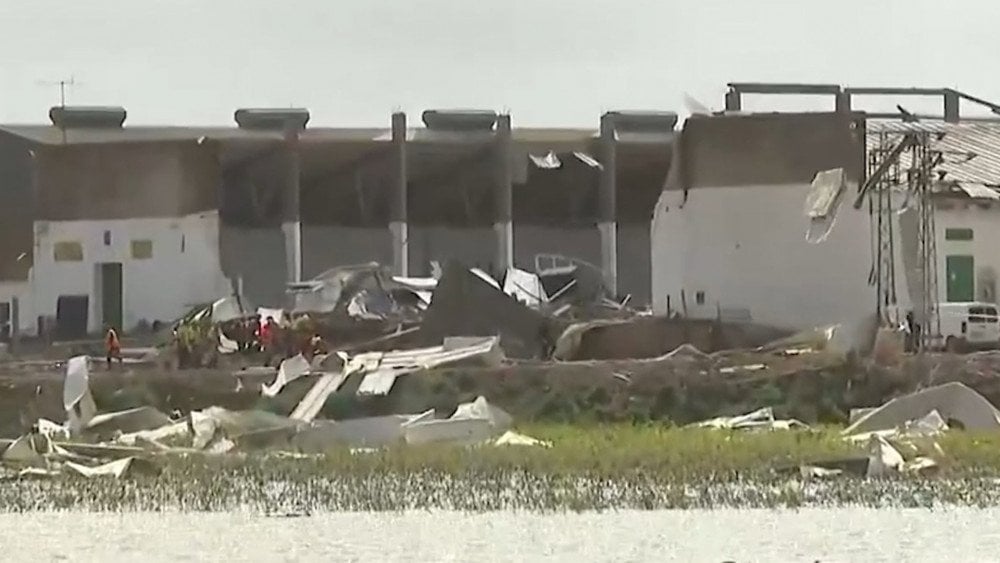
Aftermath of the tornado, Andalusia region, Spain
Indonesia
In early April, Indonesia faced severe weather, with heavy rains leading to significant flooding and landslides across various regions. Rivers overflowed, inundating residential areas and damaging infrastructure. The islands of Java, Sumatra, Sula, and Aceh province were especially affected.
In some places, water levels reached 1.5 m (4.9 ft). Hundreds of people had to evacuate, and some villages became completely isolated. Landslides damaged homes and blocked roads.
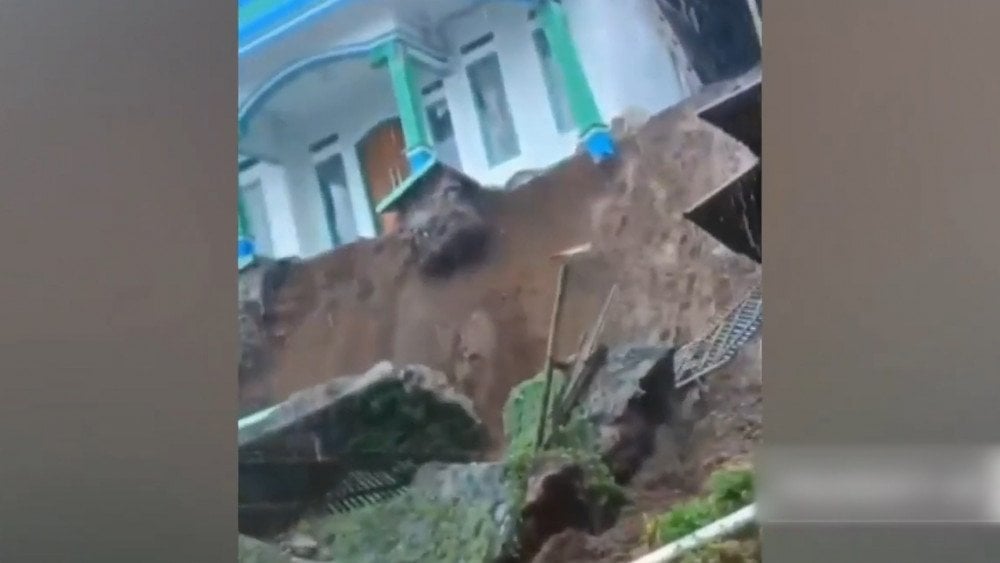
Landslide near a building, Java island, Indonesia
On April 3, a significant landslide struck the tourist area along the Pacet–Kangar route in Mojokerto Regency, East Java Province, blocking a 50 m stretch of the road.
Mud, rocks, and uprooted trees cascaded onto two cars passing by, sending them into a deep ravine. Tragically, 10 people lost their lives.
Democratic Republic of the Congo
Starting April 4, torrential rains swept over the nation’s capital—the city of Kinshasa. As a result, 13 out of the 24 districts of the 17-million-strong metropolis were affected by sudden flooding and landslides.
As of April 7, at least 33 people had died.
The Ndjili River, which runs through the entire city, overflowed its banks, damaging hundreds of buildings and flooding the main national highway. As a result, access to Ndjili International Airport was disrupted, and emergency ferries had to be deployed to assist stranded passengers.
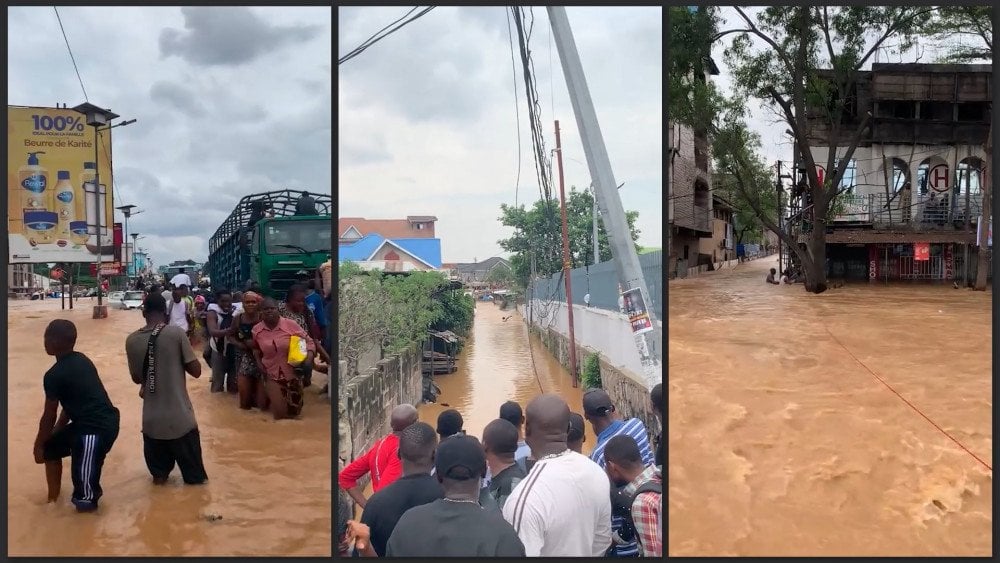
Devastating flood in Kinshasa, DR Congo
Many drivers spent the entire night in their vehicles, while residents had to move through the completely submerged streets by canoe or swimming. The city experienced a widespread power and water outage.
Russia
On April 5, several regions of Siberia—Krasnoyarsk and Altai Krais, Irkutsk, Kemerovo, and Novosibirsk Oblasts, and the Republics of Khakassia and Altai—were hit by devastating storms.
The hardest-hit areas were Krasnoyarsk Krai and the Republic of Khakassia.
Local residents admit they had never seen such a violent storm before. Winds with gusts up to 35 m/s (126 km/h or 78 mph) toppled trees and bus stops, ripped benches from the ground, overturned trash bins, and tore down billboards and fences. Debris, branches, litter, and anything poorly secured was blown across the streets. As a result, dozens of people were injured, some quite seriously. One woman died during the storm after falling from a balcony.
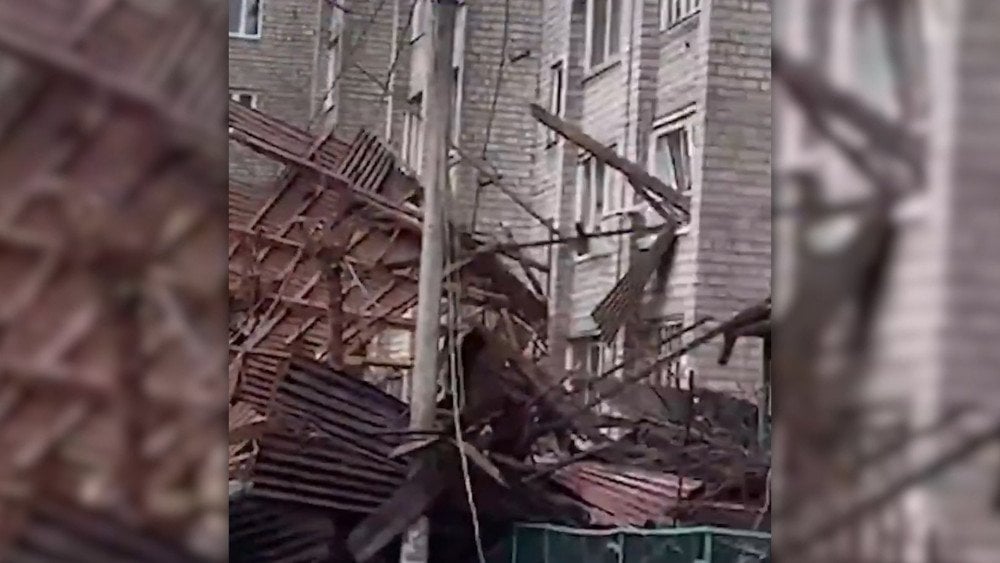
Strong wind tore the roof off an apartment building, debris damaged the lower floors and shattered windows, Russia
In the Krasnoyarsk region, powerful wind gusts tore off a large piece of roofing slate, which punctured the roof of a car. On residential properties, doors were ripped from their hinges and greenhouses were blown away by the wind.
The severe weather sparked multiple wildfires across the area.
A state of emergency has been declared in Khakassia. In the Irkutsk region, fires spread to residential homes.
In just one day, 119 fire outbreaks were recorded in Krasnoyarsk Krai. Fire whirls were spotted near the Krasnoyarsk airport, prompting evacuations from high-risk areas.
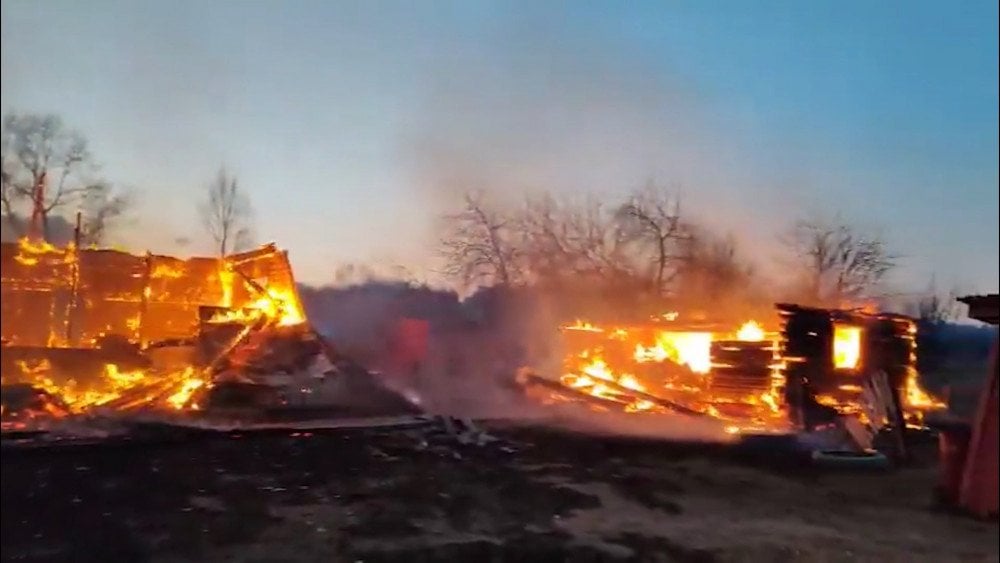
Aftermath of the wildfire that spread to residential buildings, Khakassia region, Russia
The storm left tens of thousands of residents in the region without electricity.
USA
A powerful storm system swept across the central United States starting April 2.
Over the course of two days, April 2–3, 68 confirmed tornadoes touched down across the country, including three particularly intense EF3 twisters.
It was one of the strongest tornado outbreaks in recent years.
The National Weather Service issued nearly 300 tornado warnings over those two days.
More than 15 million people were under threat.
Since the beginning of 2025, about 1,000 tornado warnings have been issued nationwide—the second-highest number ever recorded in U.S. history.
Lake City, Arkansas, was at the heart of the most powerful EF3 tornado. The storm tore through homes and tossed cars like toys.
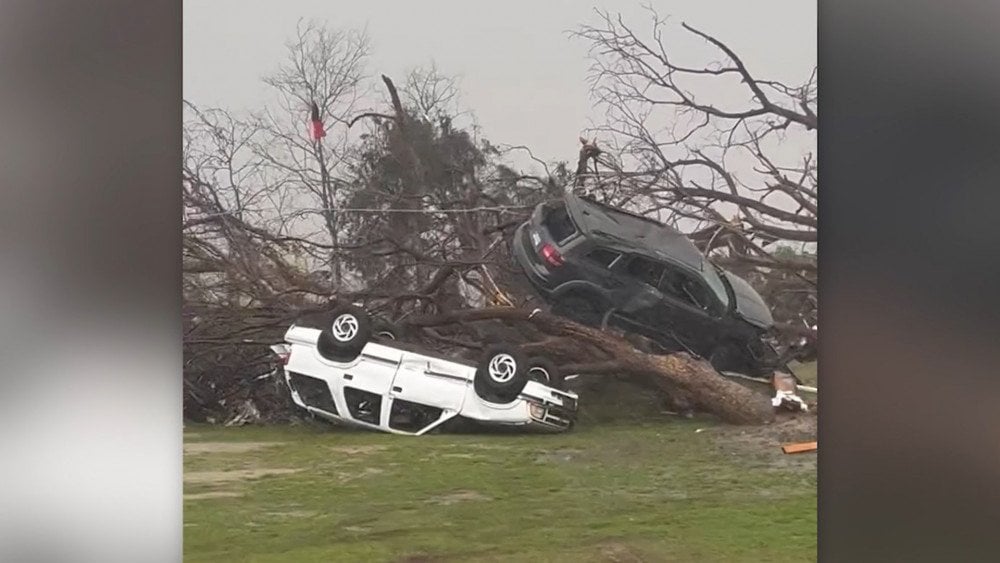
Overturned vehicles and downed trees show the devastating impact of the tornado in the United States
In Carmel, Indiana, a tornado knocked down a radio tower and tore the facades off several buildings. In Brownsburg, a warehouse collapsed, trapping three people under the debris.
At least five people were killed in Tennessee, including three in the city of Selmer, where a tornado with wind speeds reaching up to 160 mph (257 km/h) leveled entire neighborhoods.
The storm brought large hail to parts of Tennessee, Mississippi, and Arkansas—some stones measuring up to 3 inches (7.5 cm) in diameter—damaging home exteriors and roofs, and shattering car windows.
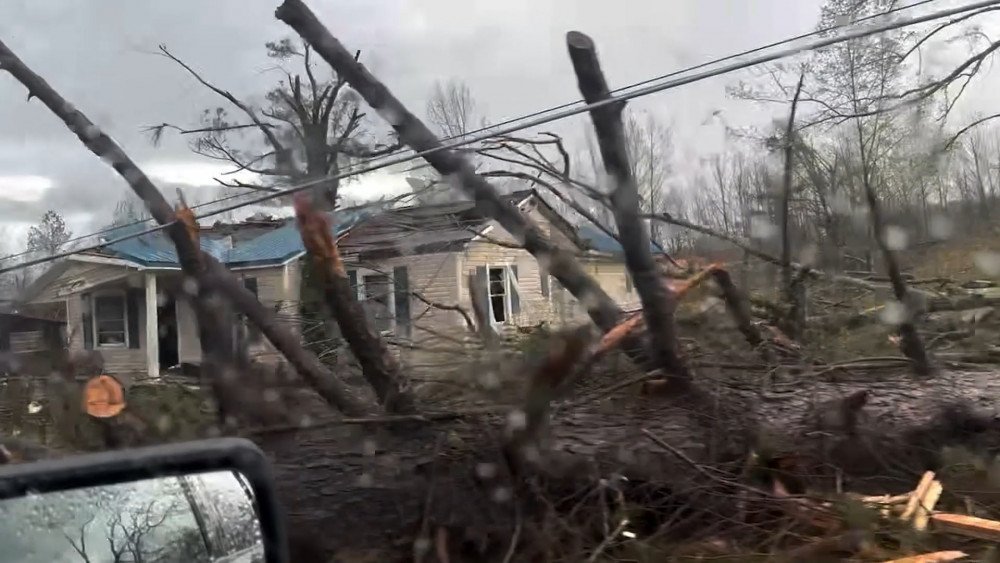
Aftermath of a powerful storm in Tennessee, USA
By the morning of April 3, over 280,000 customers in Indiana, Ohio, Kentucky, and Arkansas were left without electricity.
Another blow to the region came in the form of sudden flooding. The storm, trapped between two high-pressure systems, brought relentless rainfall to the central U.S. for four consecutive days, creating what many called a “flood of a generation.”
The situation was especially severe in Tennessee, Arkansas, and Kentucky, where nearly a month’s worth of rain fell in a single day.
In Memphis, Tennessee, 139 mm (5.5 in) of rain fell in just one day—the highest April total on record since observations began in 1872.
In Arkansas, in the northern part of the state, torrential rains caused several train cars to derail. And in Little Rock, for the first time in its history, a state of emergency was declared due to sudden flooding.
In Kentucky, floodwaters submerged roads, destroyed bridges, and cut off several communities from the outside world. Owen County experienced the most severe flooding in decades—the river level in the town of Monterey reached 17.37 m (57 ft), exceeding the historic high set in 1937. The storm left tens of thousands of residents in the region without electricity.

Catastrophic flood in the state of Kentucky, USA
In Frankfort, raging flood waters of immense power swept away a school child on his way to a bus stop. Tragically, rescuers were unable to save the child.
In Franklin County, debris from a large building was spotted floating down the river.
Some areas of the Mississippi and Ohio River valleys, hit hard by the storm, faced the highest flood risk level—Category 4—for three consecutive days. Such extreme flood risks are rare, even at the peak of the U.S. Atlantic hurricane season, which runs from June 1 to November 30.
The unrelenting rain seriously hindered cleanup efforts in areas devastated by the tornadoes.
Even after deadly tornadoes and torrential rains subsided, the threat remained. Rising river levels in towns across the Midwest and South forced residents to evacuate as flooding intensified.
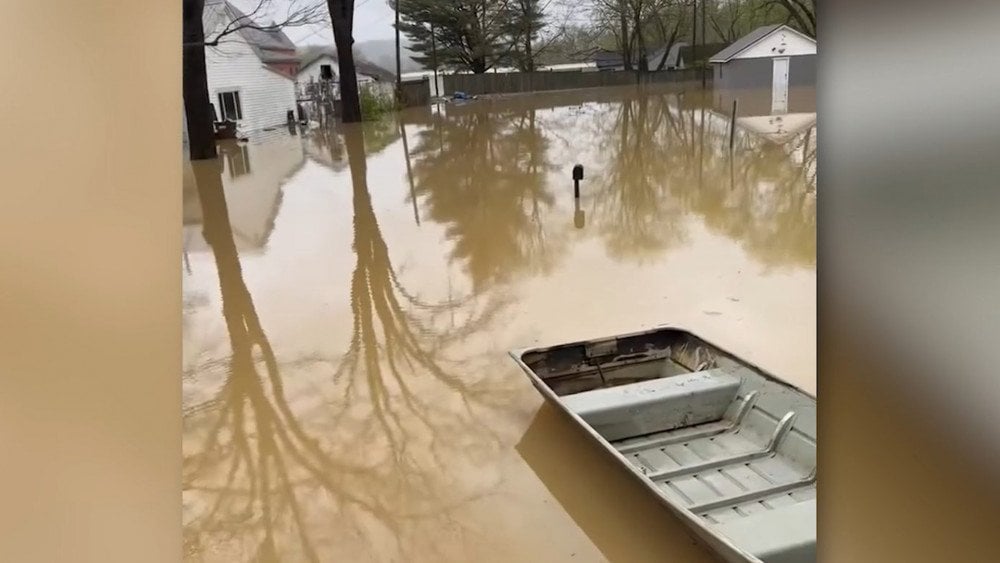
Flooded streets after torrential rains in the state of Kentucky, USA
The disaster claimed the lives of at least 25 people across seven states.
Many people attribute these calamities to human interference: climate weapons, artificial manipulation, or malicious intent. People search for culprits, hoping the disasters will cease once those allegedly controlling the weather stop pushing the buttons.
However, these events are neither conspiracies nor divine retribution. They are the natural outcome of cyclical processes that can be measured, understood and predicted. These conclusions are grounded in precise, scientific data.
Only when the media begins to report the truth—without hiding anything, without speculations and distortions, but presenting events exactly as they are—and to openly cover all threats that are 100% real, will the entire civilized world quickly understand the gravity of the situation. This will focus society's attention on science and on supporting the scientists who can explain what is happening and are capable of finding a solution.
We have everything we need: technology, knowledge, and resources. All that remains is to unite these efforts for what truly matters—our future.
You can watch the video version of this article here:
Leave a comment